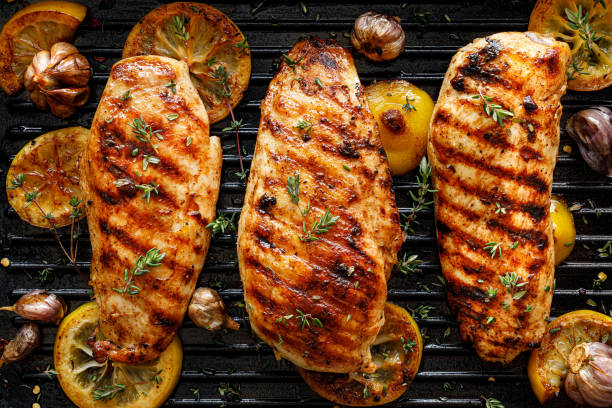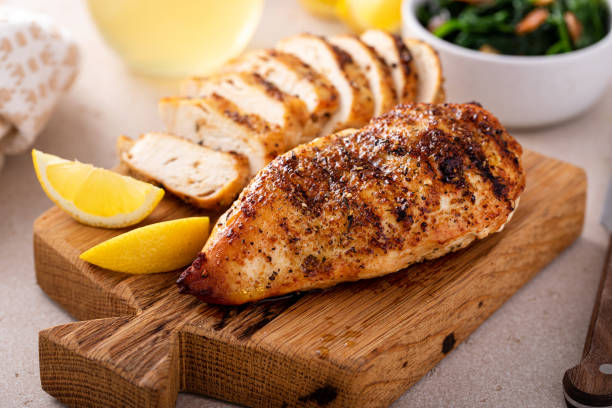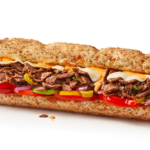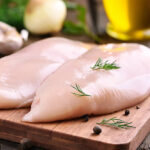When it comes to cooking, baking, or preparing your favorite chicken dishes, understanding the weight of a chicken breast is more than just a matter of curiosity—it’s a cornerstone of culinary precision. Whether you’re a seasoned chef, a home cooking enthusiast, or someone venturing into the world of meal prep, the weight of a chicken breast can significantly impact the outcome of your dishes. From ensuring even cooking times to perfecting nutritional calculations, the importance of this seemingly simple measurement cannot be overstated.
In our comprehensive guide, “How Much Does A Chicken Breast Weigh,” we dive deep into the nuances of poultry portions, shedding light on the average weights, the factors influencing these weights, and the implications for your cooking and dietary needs. With expertise drawn from culinary professionals and nutritionists, we aim to equip you with the knowledge to navigate the varied landscape of chicken breast sizes with ease.
Beyond mere numbers, we explore the value of understanding chicken breast weight in enhancing your cooking precision, ensuring nutritional accuracy, and making smarter grocery shopping decisions. This article is not just about presenting facts; it’s about enriching your culinary journey, making every meal an opportunity for perfection.
So, if you’ve ever found yourself puzzled at the meat counter, wondering how to adjust cooking times for different-sized chicken breasts, or simply curious about the intricacies of portion control, you’re in the right place. Join us as we uncover the secrets behind the weight of a chicken breast, and how this knowledge can transform your cooking. Let’s embark on a journey of discovery that promises to elevate your culinary expertise and ignite your passion for precision in every dish you create.
The Basics of Chicken Breast Weight

To utilize chicken breasts to their full potential in our kitchens, we need to understand how much they typically weigh and what causes variations.
Understanding Chicken Breast Weight
| Type Of Chicken | Weight (Grams) | Weight (Ounces) |
Weight (Pounds)
|
| Boneless & Skinless | 113-283 g | 4-10 oz | 0.25-0.63 lb |
| Boneless & With Skin | 142-312 g | 5-11 oz | 0.31-0.69 lb |
| Bone-In & Skinless | 284-425 g | 10-15 oz | 0.69-1.0 lb |
| Bone-In & With Skin | 311-454 g | 11-16 oz | 0.69-1.0 lb |
- Many factors impact weight:
- Breed – Cornish vs. free-range heirloom
- Age – Younger chickens have smaller breasts
- Diet – Pasture-raised chickens develop more muscle
- Butchery – Some trimming and slicing affects size
Keep these averages in mind when purchasing chicken breasts and planning recipes. For precision, always weigh chicken breasts instead of relying on package count.
Nutritional Insights
The nutritional content of chicken breasts is directly tied to their weight. Let’s explore how size affects protein, vitamins, minerals, and fat.
Detailed Nutritional Breakdown
Below is the nutritional information in a 6 oz boneless, skinless chicken breast:
| Nutrient | Amount | % Daily Value |
| Calories | 142 | |
| Fat | 3 g | 5% |
| Saturated Fat | 1 g | 3% |
| Cholesterol | 62 mg | 21% |
| Sodium | 74 mg | 3% |
| Potassium | 230 mg | 7% |
| Protein | 26 g | 52% |
| Vitamin A | 3% | |
| Vitamin C | 0% | |
| Calcium | 2% | |
| Iron | 6% |
Chicken is an excellent source of lean protein and important vitamins/minerals.
Protein Content and Weight Relationship
The protein content correlates directly with weight.
- A 4 oz chicken breast contains around 19g protein
- A 6 oz breast has 26g
- An 8 oz breast has 35g
When trying to hit protein targets, pay close attention to chicken breast sizes.
Comparison with Other Meat Proteins
Compared to other meats, chicken breast is very high in protein and low in fat.
| Protein Source | Protein (g) | Fat (g) |
| 6 oz Chicken Breast | 26 | 3 |
| 6 oz Pork Chop | 22 | 9 |
| 6 oz Salmon Fillet | 22 | 6 |
| 6 oz Ground Beef | 22 | 15 |
Chicken is a lean protein powerhouse.
Cooking and Preparation Insights
Understanding how preparation and cooking affects chicken breast weight allows you to plan timing, grocery needs, and recipes appropriately.
Raw vs. Cooked: Weight and Volume Changes
See more : How many ounces is in a bottle of water? Get the answer now
Chicken breasts change in weight and volume during cooking:
- Raw chicken contains about 75% water
- During cooking, much of this moisture evaporates
- This causes chicken to decrease in weight and volume
- A 6 oz raw breast may yield just 4-5 oz cooked
Always account for moisture loss when calculating portions.
Cooking Time Variations by Weight
Larger chicken breasts require longer cook times:
| Breast Weight | Baked | Grilled | Fried/Sautéed |
| 4 oz | 12-15 min | 8-10 min | 6-8 min |
| 6 oz | 15-18 min | 10-12 min | 8-10 min |
| 8 oz | 18-22 min | 12-15 min | 10-12 min |
Monitor thickness and test for doneness rather than relying solely on time.
Recipes and Cooking Tips for Various Weights
Different chicken breast sizes work better for certain dishes.
Smaller Breasts
- Great for stir fries, skewers, sandwiches
- Cook quickly
- Prone to overcooking
Medium Breasts
- Ideal for sautéing or baking
- Offer flexibility in portioning
Large Breasts
- Excellent for roasting, stuffing, pounding for cutlets
- Provide hearty portions
- Require slower, low-temp cooking
Adapting methods to size results in tender, juicy chicken every time.
Practical Measurement and Buying Guide
While the gold standard is weighing chicken breasts directly, there are still ways to estimate portion sizes at home.
Measuring Chicken Breast Weight Without Scales
If you don’t have kitchen scales, use these tricks:
- Palm test – A palm-sized breast is around 4 oz
- Deck of cards – A breast the size of a deck is about 6 oz
- Compare to common items – A baseball-sized breast is roughly 5 oz
These approximations help guide portioning when precision weighing isn’t possible.
Consumer Buying Guide
Follow these tips for savvy chicken breast shopping:
- Check label for weight, pieces and grain-fed/free-range claims
- Estimate weight based on visual inspection
- Pick consistent sizes for cooking ease
- Avoid packages with excessive liquid
- Calculate price per pound or per piece
Being an informed buyer gets you the best chicken breast value.
Cost Analysis: Weight vs. Price
Larger chicken breasts are often more economical:
- Chicken breasts cost $3.99 – $6.99 per pound
- Buying larger breasts maximizes meat for the price
- Smaller portions and thin cutlets cost more per ounce
See more : How Much Protein In 6 Oz Chicken Breast? Learn ABout Protein
Compare unit prices to identify the best deals.
Ethical and Environmental Considerations

The practices used to raise and process chicken have big impacts on animal welfare and sustainability.
Sustainability and Ethical Farming Practices
- Conventional farming often lacks concern for sustainability and humane treatment
- Free-range, pasture-raised and organic labels indicate more responsible practices
- Choosing chicken raised humanely and sustainably promotes better systems
We can support positive change through our purchasing choices.
Making Ethical and Sustainable Choices
- Seek out certified humane, non-GMO, hormone-free chicken
- Support local farms selling ethically raised chicken
- Willingness to pay higher costs encourages better practices
- Apply pressure on retailers to offer sustainable poultry
Our collective actions drive shifts to ethical chicken production methods.
Global Culinary Practices
From staple family meals to gourmet dishes, chicken breast is valued worldwide for its versatility.
American Classics – Fried chicken, chicken parmesan, buffalo wings
French Favorites – Coq au vin, chicken cordon bleu
Italian Specialties – Chicken piccata, tuscan chicken
Latin American Flair – Chicken fajitas, arroz con pollo, chicken tamales
Asian Delights – Kung pao chicken, butter chicken, chicken adobo
Chicken transcends borders, bringing people together through universally loved recipes.
Advanced Topics
We’ve covered the basics, but there are even more in-depth considerations when prepping and cooking chicken breasts.
Impact of Processing on Weight and Nutrition
- Brining chicken adds moisture and weight
- Pounding to flatten can increase surface area and cook time
- Marinating can penetrate and slightly increase weight
Factor in these potential weight changes based on preparation method.
Safe Storage and Spoilage Recognition
To prevent illness, follow safe raw chicken handling:
- Store fresh chicken in fridge 1-2 days max
- Freeze if not using within this timeframe
- Look for foul odors, sliminess, or discoloration
- When in doubt, throw it out.
Properly stored, fresh chicken lasts up to 9 months frozen.
Conclusion
Whether you’re a home cook or professional chef, understanding the weight ranges of chicken breasts is essential knowledge. With this complete guide, you can now expertly incorporate chicken into nutritious recipes, plan perfect portions, maximize value when buying, and even promote sustainable practices – simply by knowing more about this dietary staple. So grab your kitchen scale and get ready to be more confident than ever when dealing with chicken breasts of all sizes.

Executive Chef Sally Nesta has been cooking up a storm at Rocky’s Pub & Grill for over fifteen years. She is known for her delicious, hearty pub grub that will leave you munching for more. If you’re avoiding fat or gluten, no problem! Rocky’s Pub offers a number of low-fat and gluten-free choices. The bar at this restaurant is fully stocked, so pair your meal with a glass of wine or beer.Crowds tend to pack the place on weekends, so call ahead to reserve a table. Street parking is provided for those dining at the restaurant’s South Park Street location.Listen up, penny pinchers! Rocky’s Pub serves lip-smacking dishes that are full of flavor for next to nothing. So when you’re in the mood for some tasty pub food, make your way over to Rocky’s Pub.











